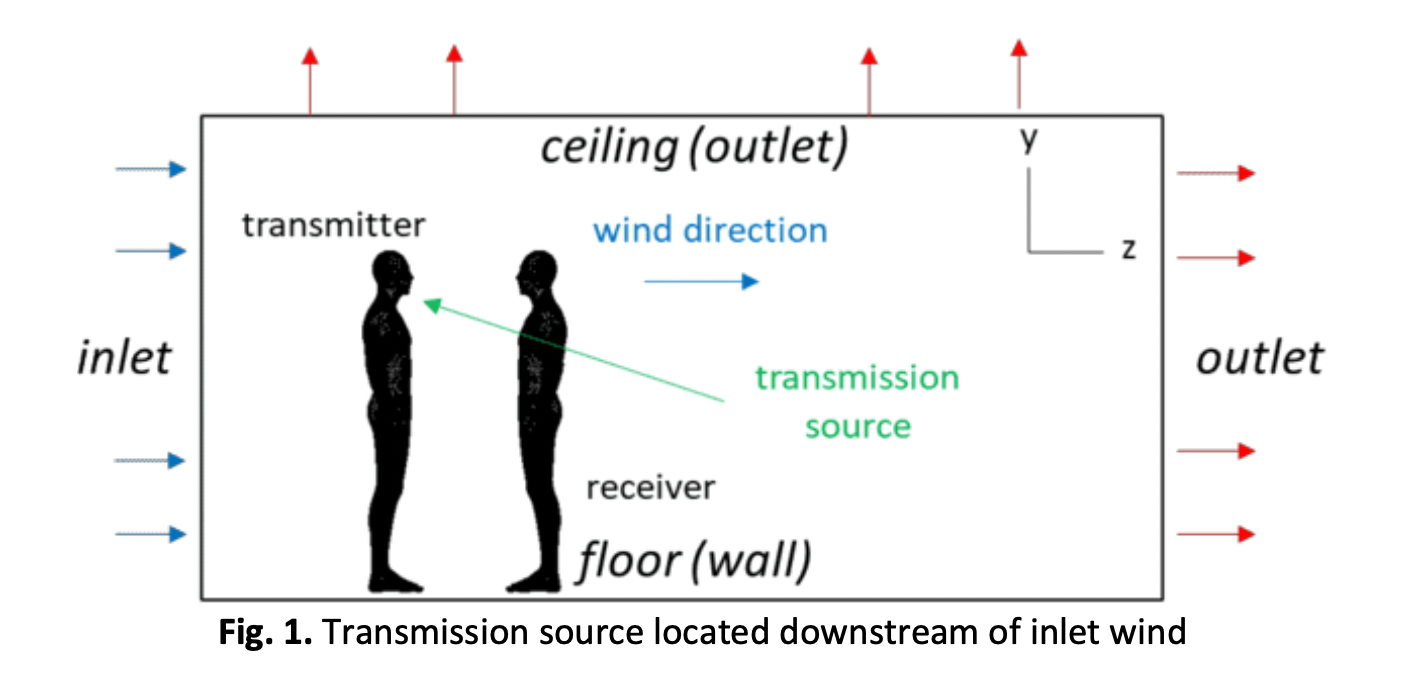Effect of Indoor Condition with Cross Ventilation on Deposition of Airborne Droplets Emitted from Human Cough
DOI:
https://doi.org/10.37934/arfmts.102.1.184202Keywords:
Airborne transmission, cross ventilation, discrete phase model, droplet deposition, Euler-LagrangeAbstract
Prediction of airborne transmission in different environmental condition remains as the research challenge in the field. This has motivated the present study to obtain the direct impact of flow field to the physical nature of transmission. ANSYS Fluent 2022 R1 software is utilised in this research to numerically investigate and visualize flow pattern in a closed environment with cross ventilation and its effect to the emitted droplets deposition. The effect of different indoor parameters towards airborne transmission are investigated, which include wind velocity, air relative humidity (RH), and exposure time after emission. Simulation result revealed increasing wind velocity according to Beaufort wind scale of 1.0 to 3.9 m/s, increases transmission rate due to enhanced convection effect. Surrounding air with higher RH leads to a larger mean diameter of particles due to hygroscopic growth effect, while evaporation effect dominates in lower air RH, leading to particle shrinkage. In a light wind breeze, droplet mass of 5.15 mg deposited on receiver body within 0.5 s of transmission when RH is 40%, while only 3.29 mg droplets reached receiver in RH of 99.5%. Droplet particles settle on the floor within 1.50 s revealed 0.66 mg deposited mass in higher RH, while 0.26 mg of droplets deposited in lower RH. Deposition at transmitter body is possible due to recirculation effect of incoming wind generated between transmitter and receiver, leading to 3.7 times higher deposited mass in lower RH as compared to in higher RH. This research highlights application of Euler-Lagrange model to represent the trajectory of cough droplets influenced by indoor condition with horizontal wind, in the effort to strengthen safety and health judgement in the event of a pandemic.
Downloads
































